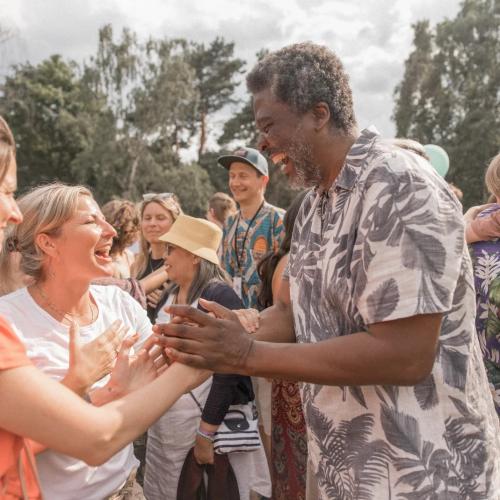Related Stories
The Bonobo In All of Us
Key Excerpts from Article on Website of PBS Nova Program
Posted: February 15th, 2007
http://www.pbs.org/wgbh/nova/bonobos/dewaal.html
We can learn as much about human evolution and behavior by studying the sensitive, peace-loving bonobo as by studying the more violent chimpanzeeboth of which share more than 98 percent of our DNA. "Bonobos help us to see ourselves more in the round," says Frans de Waal, a primatologist at the Yerkes National Primate Research Center in Atlanta. In this interview, de Waal explains [why] it's vital to protect this highly endangered close relative of ours. De Waal: I first saw them in 1978. At the time, I knew a lot about chimps, because I had been studying them. The sense you get looking [bonobos] in the eyes is that they're more sensitive, more sensual. There's a high emotional awareness. At the time, I was interested in reconciliation after fights, and I wanted to know how bonobos did it compared to chimpanzees. Very soon I discovered that they were much more sexual in everything they did, and that interested menot so much for the sex part ... but much more how they have such a peaceful society, because they are much less violent than chimpanzees. Bonobos tell us about the possibility of having peaceful relationships. When the Japanese scientists ... came along with the story that bonobo groups [meeting for the first time not only] mingle, but they have sex together, the kids play with each other, they groom each other afterwards ... all this was absolutely shocking and didn't fit the image that we had of where we came from. And it was totally ignored. It's very interesting: when something doesn't fit your thinking, the best way to deal with it is to shove it out the window and ignore it, and that's what the scientific community did for about 20 years.
Note: To see how bonobos use language symbols to communicate with researchers, click here. To access a wonderful series of articles, slide shows, and presentations on the bonobos from the PBS website, click here.
Related Stories
Top Inspiring News Articles
Top Inspiring News Articles from Years Past













































































